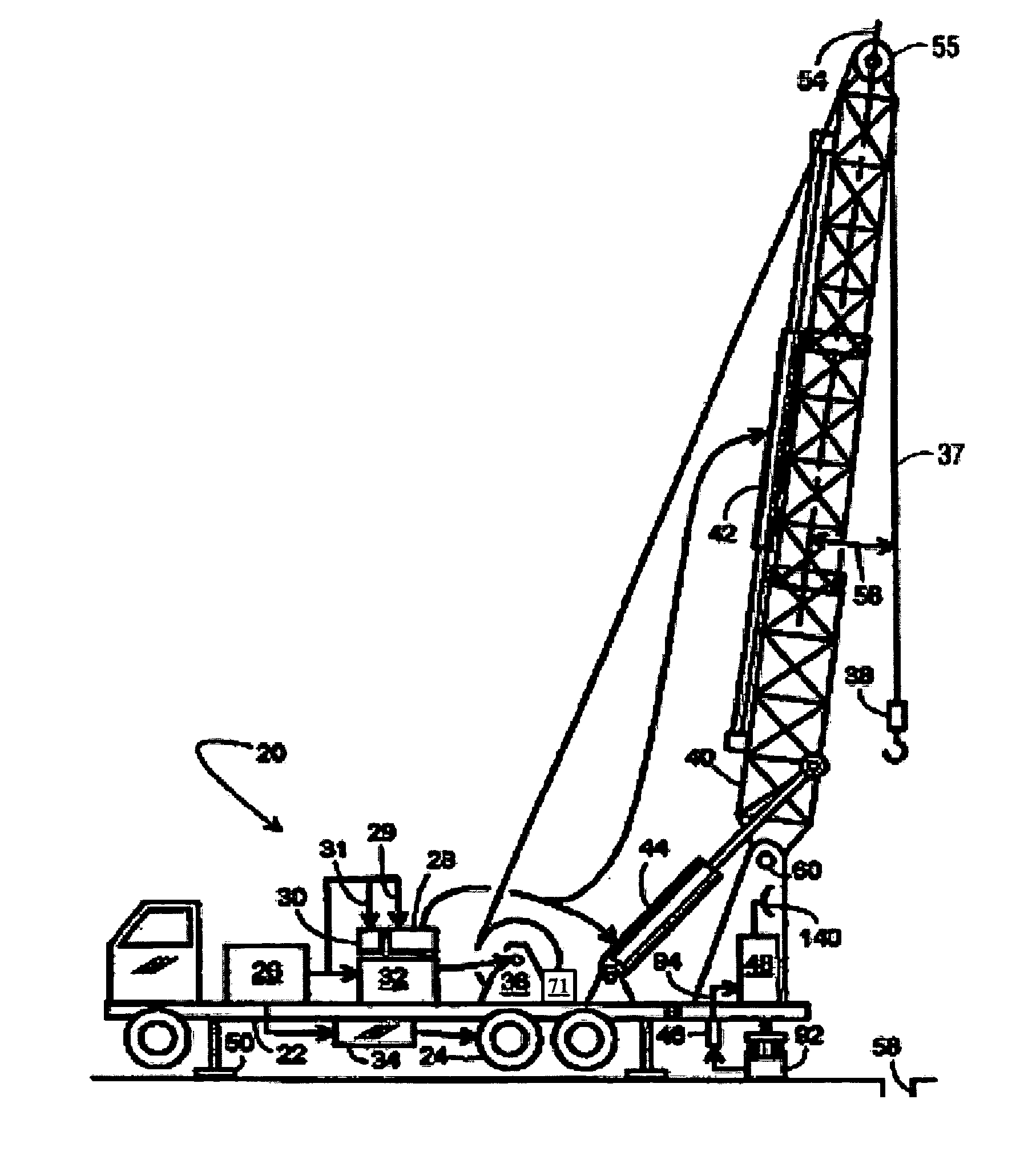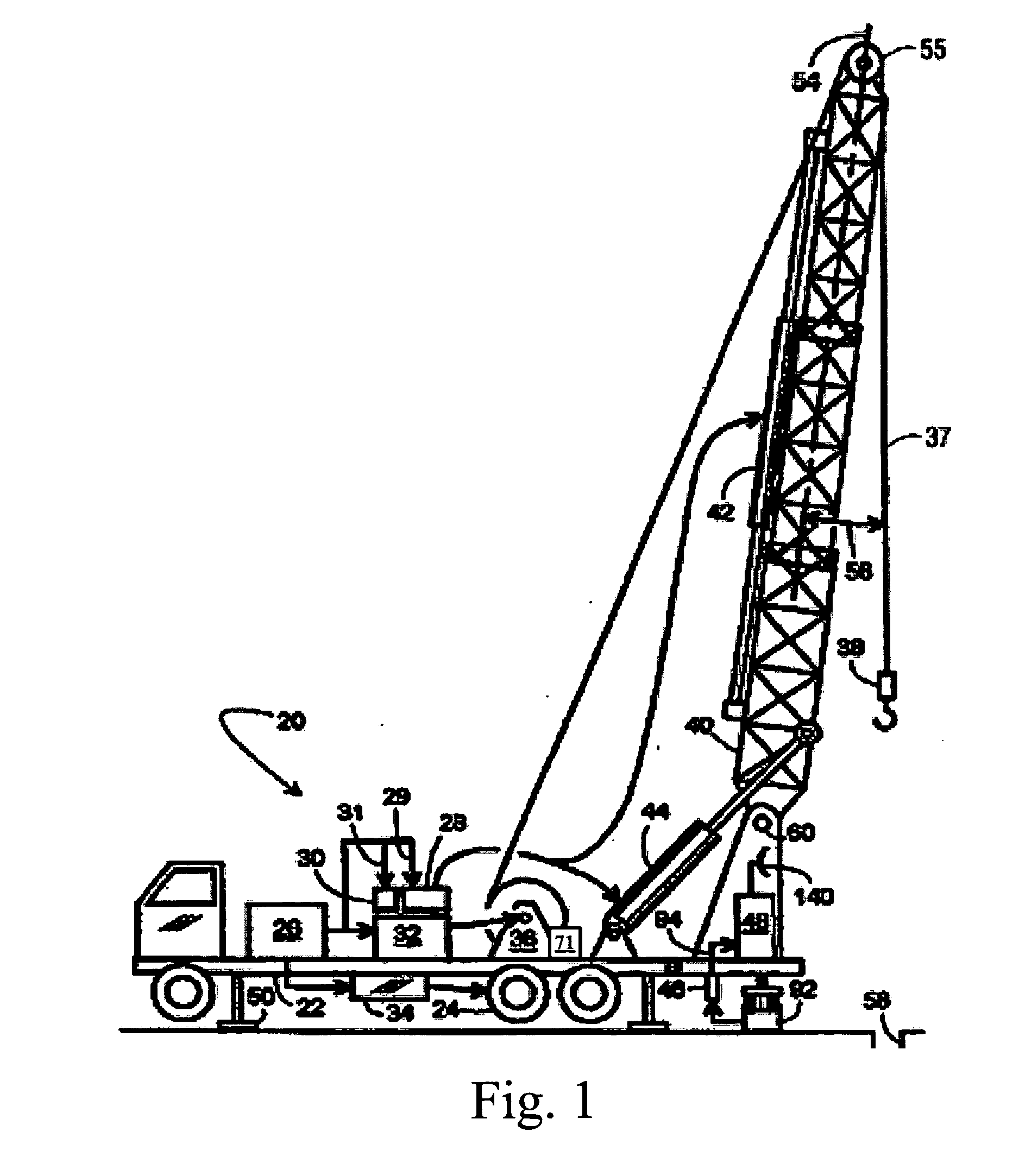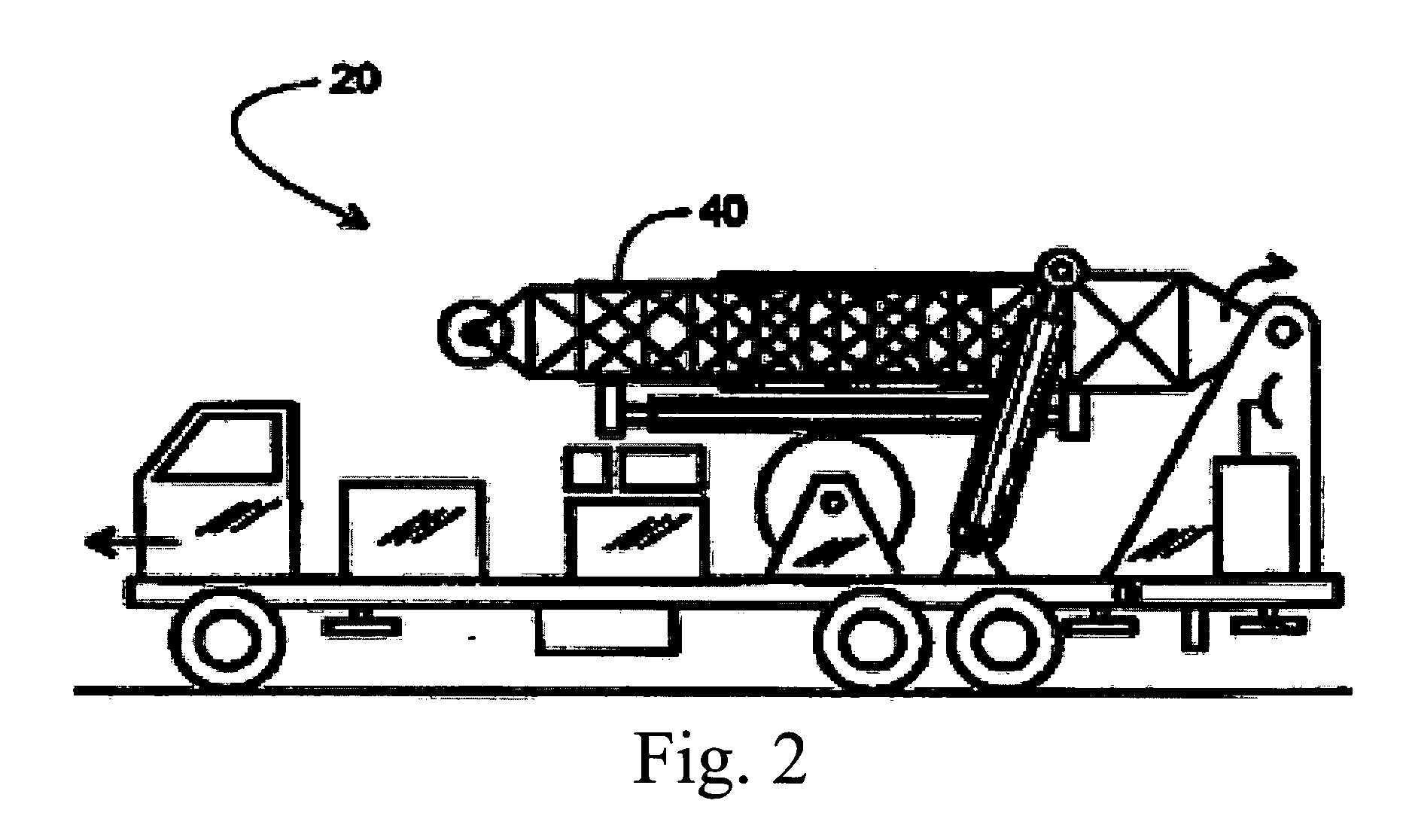Method for determining block properties of a service rig by evaluating rig data
a technology of service rigs and block properties, which is applied in the field of evaluating rig data for the properties of service rigs, can solve the problems of operator inadvertently exceeding the safe position of the traveling block, equipment damage, and hazard to personnel working on the equipmen
- Summary
- Abstract
- Description
- Claims
- Application Information
AI Technical Summary
Benefits of technology
Problems solved by technology
Method used
Image
Examples
Embodiment Construction
[0030] Because the mobile service rig is typically the center of workover or service operations at the well site, the present invention is directed to incrementing the service rig in such a manner that activity-based and / or time-based data for the well site is recorded. The invention contemplates that the acquired data can be monitored by a rig operator or transmitted in near real-time or periodically via wired, wireless, satellite or physical transfer, such as by memory module to a data center preferably controlled by the service rig owner, but alternately controlled by the well owner or another. The data can thereafter be used to evaluate the data and supervise from off-site the activities of the well service rig. This latter implementation of the invention permits a service rig owner, supervisor, or well-owner customer to monitor the work being completed by the well service rig and other third parties based on data that is provided and can be reviewed after the fact or substantia...
PUM
 Login to View More
Login to View More Abstract
Description
Claims
Application Information
 Login to View More
Login to View More - R&D
- Intellectual Property
- Life Sciences
- Materials
- Tech Scout
- Unparalleled Data Quality
- Higher Quality Content
- 60% Fewer Hallucinations
Browse by: Latest US Patents, China's latest patents, Technical Efficacy Thesaurus, Application Domain, Technology Topic, Popular Technical Reports.
© 2025 PatSnap. All rights reserved.Legal|Privacy policy|Modern Slavery Act Transparency Statement|Sitemap|About US| Contact US: help@patsnap.com



